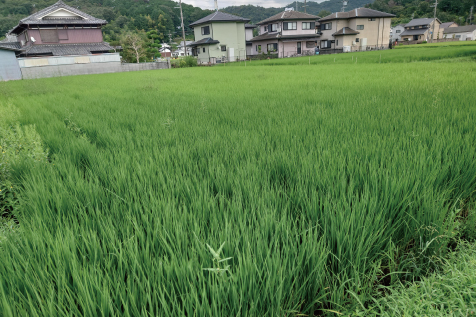BREWING SAKE & SDGs
BREWING SAKE & SDGs
Traditional Techniques Bring Zero-carbon, recycling-based production model
TANAKA SHUZOJO
Himeji Brewers Association
Achievement goal


In sake brewing, nothing is discarded in each step of the process. Rice is used and fermented, resulting in sake and sake lees (sake kasu). Sakekasu is consumed as is for food or used for pickles. Rice bran from rice polishing is in demand as rice oil, rice confectionery, and rice flour, depending on the category of rice.
We use the oldest type of equipment called "Ishikake-shiki Tenbin Shibori," which does not use any electricity or carbon energy and only five of them are in operation in Japan, to press the "moromi" made from fermentation. The weight of the natural stone is used to slowly press the rice over a period of three days using the principle of leverage. Although it is time-consuming and labor-intensive, the rich flavor is surprisingly different from that of products made in pursuit of efficiency.
In addition, since last year, we have been using organic farming methods for rice cultivation, and we brew our sake with Yamadanishiki produced in Hyogo Prefecture. The fertilizer used in organic farming is made from food scraps from school lunches and leftovers from restaurants and livestock manure, and no chemical fertilizers are used. By continuing this approach, we will reduce waste and promote recycling-oriented sake brewing.
(Right) Yamada-nishiki grown using organic farming methods.
(Front) Yamada-nishiki grown with organic fertilisers. The colour of the leaves is darker.
(Back) Yamada-nishiki grown with chemical fertilisers.
